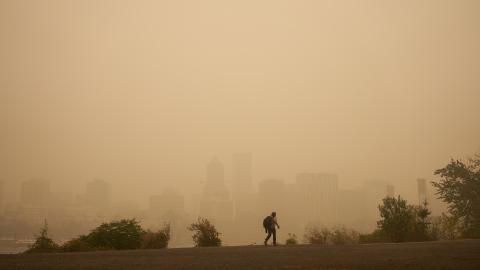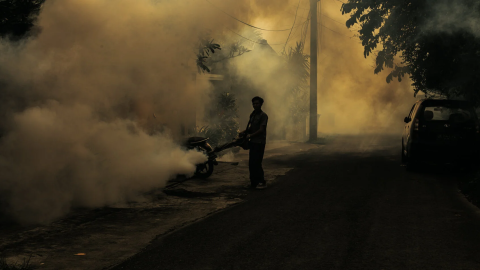By the end of the century, heat exposure may lead to about 110,000 premature deaths annually across the United States given a high degree of climate warming, suggests a new study published in GeoHealth.
Climate change is associated with many adverse effects on human health, including more frequent, more intense and longer heat waves. Exposure to heat can hinder the body’s ability to regulate internal temperature, potentially exacerbating chronic conditions, causing heatstroke or hypothermia, and resulting in death.
“Nobody needs to die in a heat wave — heat wave–related deaths are potentially preventable,” said study author Kristie Ebi, a professor in the UW Department of Environmental & Occupational Health Sciences (DEOHS) and the Department of Global Health. “I see this study as a call to action to reduce our greenhouse emissions and teach people how to protect themselves in the heat.”
Predicting heat-related deaths

The study investigators used information about mean temperatures from the National Oceanic and Atmospheric Administration and mortality data from the National Center for Health Statistics from 1985 to 2006 to determine the individual relationship between temperature and mortality for 10 US cities: Atlanta, Boston, Chicago, Dallas, Houston, Los Angeles, Miami, New York, Philadelphia and Washington, DC.
Prior studies of temperature and mortality focused narrowly on specific urban areas. This study went further by analyzing the effects of heat exposure across the contiguous United States.
To achieve this goal, the investigators used the city-specific data to develop a mathematical relationship predicting the US lives that could be lost due to heat exposure at the end of the century. Although the relationship sometimes overpredicted or underpredicted deaths at the city level, it proved accurate on a larger scale.
Accounting for population growth, the research team applied this mathematical relationship to three possible future climate-change scenarios. Each scenario delineates a different potential track for greenhouse gas emissions, from low to moderate to high.
“Greenhouse gases are essentially putting energy into the atmosphere; this energy has to go somewhere,” Ebi said. “These scenarios are used to estimate future temperature change.”
A serious risk
The researchers found that in the current decade, 2010–2020, there were approximately 12,000 heat-related premature deaths annually in the US.
By 2100, deaths would increase by 36,000 in a moderate-warming scenario and by 97,000 in a high-warming scenario. In a low-warming scenario, where stringent climate policies significantly limit emissions, deaths would remain statistically unchanged from those in the current decade.
The study accounts for some forms of human adaptation to higher temperatures, such as building improvements or individual changes in behavior, which reduced the impact of heat on mortality by 40–45%. Yet this benefit was offset by projected increases in population.
More research is needed on how to help people adapt to a warming climate, and awareness is key, Ebi noted. “There is a significant research gap on effective ways to communicate that heat is a serious risk,” she said. “There are effective actions that can be taken by individuals and communities to reduce these risks.”
The lead author of this study is Drew Shindell, the Nicholas Distinguished Professor of Earth Science at Duke University. Co-authors include Yuqiang Zhang, Melissa Scott, Muye Ru and Krista Stark.




